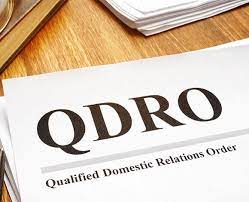What is ERISA anyway?
 Frequently, divorcing couples will hear that their retirement plans are “ERISA plans” or “backed by ERISA”? What is ERISA anyway?
Frequently, divorcing couples will hear that their retirement plans are “ERISA plans” or “backed by ERISA”? What is ERISA anyway?
The simple answer is that ERISA (“Employee Retirement Income Security Act”) is a 1974 Federal law. But that doesn’t really answer the question. What does ERISA do?
The easiest way to explain ERISA is to explain what it was like before ERISA. Before ERISA, many employers wanted to offer certain kinds of benefits to reward employees and attract talent. Rather than simply paying employees more, employers began to create plans to defer compensation to some point in the future, namely at or after retirement. In other words: pension.
These pensions were largely unregulated and, therefore, all sorts of abuse began to creep into the system. Employers might promise a pension but fire an employee the day before she retired, thus losing her entire pension. Also, pensions might poorly invest its funds, leaving the coffers empty when employees were set to retire.
Upon this background, ERISA was signed into Federal law. ERISA contains many parts and permitted pensions to be legitimized or qualified under ERISA. For example, it requires that pensions must provide plan summaries to participants and provide a calculation of what the participant’s benefit will be. ERISA also established the Pension Benefit Guaranty Corporation (“PBGC”), which assumes or insures plans which are underfunded (similar to the Federal Deposit Insurance Corporation’s relationship to banks). Today, the vast majority of retirement plans which are created for employees and all their variety exist only because of the stability and regularity that ERISA created.
Turning to divorce and family law, ERISA also included an anti-alienation provision. This was a rule which was designed to protect participants. It meant that participants couldn’t give away their pensions, even if they wanted. The anti-alienation provision of ERISA, however, suggested that participants could not give their benefits of former spouse, even for the purposes of family support. In other words, while ERISA was designed to protect participants, it actually great disadvantaged the former spouses and children of participants.
Thus, in 1984, Congress based ERISA’s little brother: the Retirement Equity Act (REA). REA provided clarity on the tension between ERISA’s anti-alienation provision and need to protect divorcing parties. REA provided that ERISA-qualified plans had honor specialized court orders called QDROs (Qualified Domestic Relations Orders) which divide pensions (or alienate them) so that former spouses and/or children could receive part of the pension after divorce.
So, what is ERISA anyway? ERISA (together with REA) is the federal law which protects pensions and provides that QDROs can divide pensions for former spouses.
If you or your attorney need a QDRO drafted, please call Weinberg & Schwartz.









